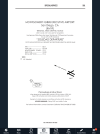Like Luv stated, no perfect answer. I always preferred to issue the clearance in the air when I was busy on approach but back in those days, I’d say 99% of the time is was a CAF. These days it seems like there’s a lot of last minute changes that require an FRC.
There are pros and cons to both ways but I wouldn’t worry about being a hassle to them on their end. You do what’s best for you. Generally the person reading the clearance on the ground (CD / FD) isn’t all that busy. Once given, the airport is shutdown for IFRs and the airspace is protected for the “when entering controlled airspace…” but doesn’t affect the controllers workload much. Airborne is pretty easy since the strip should already be on the board and the controller has the luxury of waiting (first come first served) til they have time. Unfortunately if it’s super busy you might penetrate another inter-facility sector and now the controller kicks the can down the road and has you call them. Or, they pick up the landline and get permission to issue the clearance.
So yeah, pros and cons to everything. I’d just make sure you at least have VFR up to the MIA in your area. If not, the controller might have issues identifying you and delaying your clearance. There’s the infamous Beechjet crash in 1991 where the pilots had problems picking up a clearance at low altitude and MVFR in the area.
After a VFR takeoff, the captain contacted Atlanta Center to obtain an IFR clearance to Huntsville. Higher terrain and low ceilings caused the captain to order a right 180deg turn. 4 minu...
aviation-safety.net




